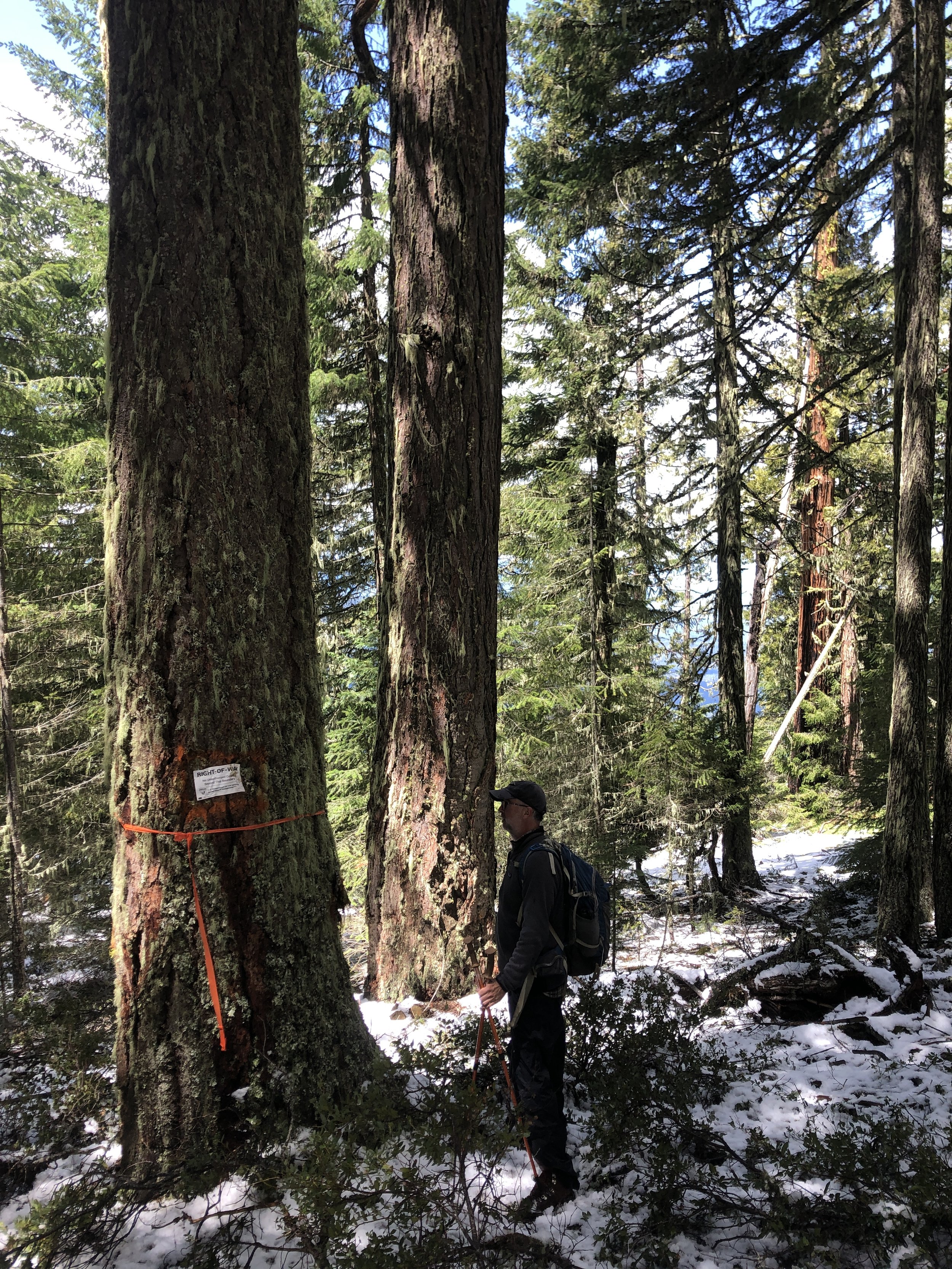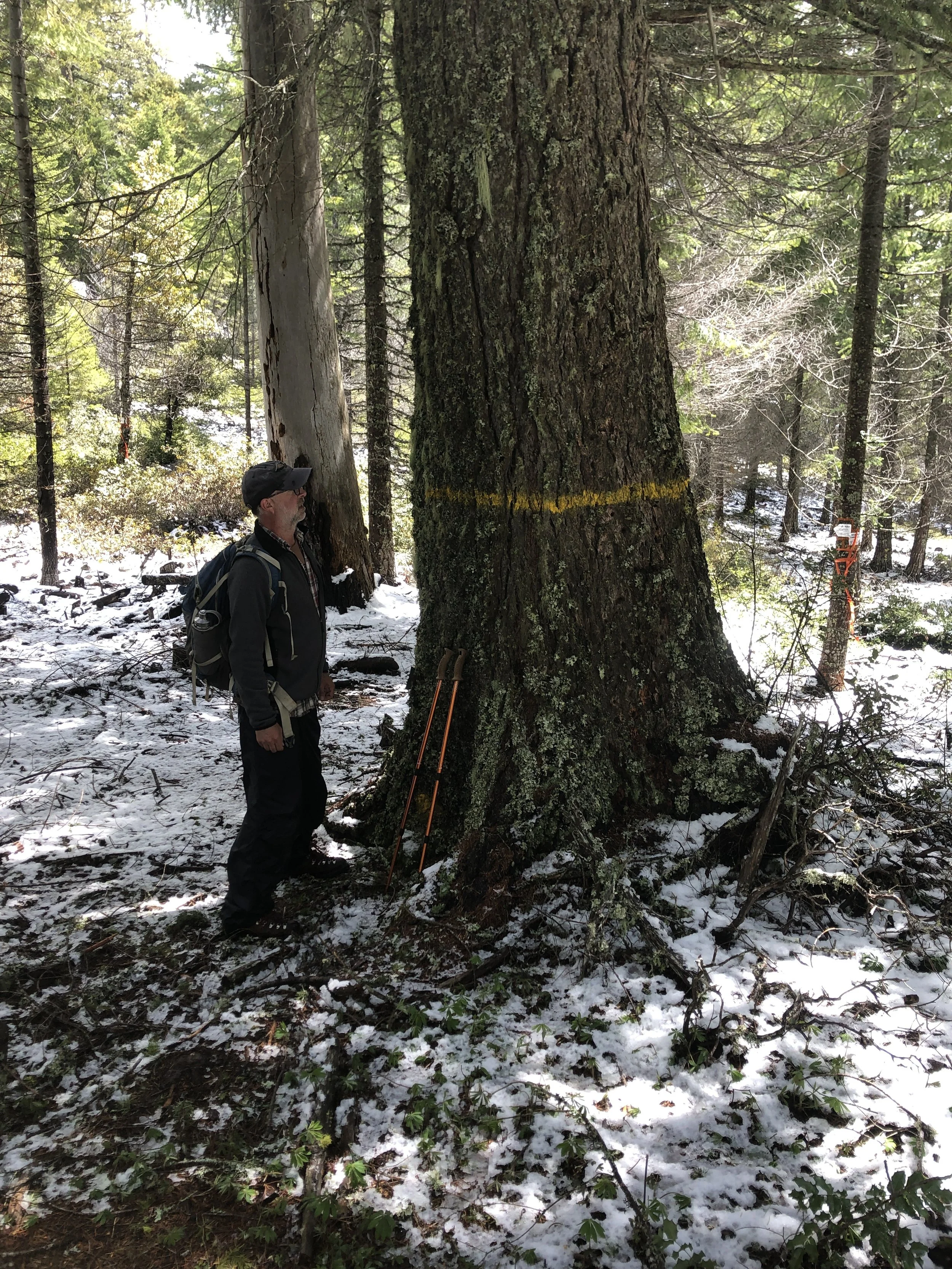“Integrated Vegetation Management” on Medford District BLM Forestlands: The Good, the Bad and the Ugly
Written by George Sexton, February 14th, 2023
Some timber advocates within the Bureau of Land Management (BLM) simply cannot abide the idea that there are old-growth forests designated as protected “Late Successional Reserves” on public lands. So, they’ve designed a new program called “Integrated Vegetation Management” to target Late Successional Reserves for logging. While the Medford BLM District continues to propose old-growth timber sales throughout southwest Oregon in stands designated as the “Harvest Land Base” they now also have their sights set on logging the Late Successional Reserves that were set aside to provide old-growth wildlife habitat.
“Open-Seral” Means Clearcuts
Through the Integrated Vegetation Management timber program the BLM intends to convert existing late-successional forests located in Late Successional Reserves into “open seral” stands devoid of forest tree canopy cover- in other words the timber sales are designed to eliminate old-growth forest habitat. One wonders what the point of a Late Successional Reserve is if the BLM refuses to protect and retain late-successional forests located within the so-called reserves.
SEE MAPS OF THE LATE MUNGERS AND PENN BUTTE TIMBER SALES BELOW
The Late Mungers and Penn Butte Timber Sales
The first Medford District BLM IVM timber sales out of the gates are located in the Williams Late Successional Reserve (above the community of Williams.) To access these old-growth stands one must drive through thousands of acres of extremely dense second-growth timber plantations on both private and BLM lands that surround the homes and ranches in the Williams Valley. The vast network of tree plantations that could carry wildfire into the Valley are not proposed for treatment as part of the Late Mungers and Penn Butte timber sales. Instead, BLM timber planners are targeting old-growth forests in the Late Successional Reserves far away from town for conversion into “open seral” stands devoid of tree cover. Some of the “gap creation” logging prescriptions will result in clearcuts larger than two football fields in size.
Cutting the Public Out of Public Land Management
The primary point of the IVM logging program is for BLM timber planners to avoid environmental analysis and public participation when planning old-growth timber sales in the Late Successional Reserve land use allocation. Instead of revealing the impacts of the proposed logging on wildlife habitat, watershed values and fire hazard through documentation in an Environmental Assessment, BLM timber planners will instead issue a “Determination of NEPA Adequacy” which consists of an internal checklist that need not be subject to public involvement.
Putting the Brakes on Illegal Logging
The BLM’s attempt to insulate its Late Successional Reserve old-growth logging program from environmental analysis and public input is ill-conceived and counterproductive. While many in the Forest Service are embracing public involvement and collaboration to strengthen public lands management, the BLM is stuck in a paradigm of its own making in which agency timber planners try to cut every corner in order to accelerate the logging of late-successional forests. Fortunately, it is extremely unlikely that federal courts are going to go along with the BLM’s proposal to convert lands designated as old-growth reserves into “open seral” clearcuts.
We believe that BLM public lands management would benefit from more public involvement not less. There is a widespread desire among many of the BLM’s neighbors to work together to protect forest and watershed values in the region. Unfortunately, the IVM old-growth logging program makes it clear that some BLM timber planners still don’t see the forest for the trees.


